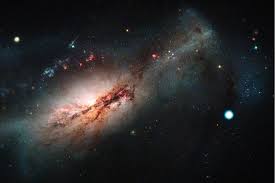New Supernova : SN 2023adsy

Using the James Webb Space Telescope (JWST), astronomers recently discovered a new supernova, designated SN 2023adsy, the most distant Type Ia supernova so far detected.
- Supernova is the name given to the cataclysmic explosion of a massive star.
- Supernovas are the largest explosions that take place in space.
- A star can go supernova in one of two ways:
- Type I supernova: A star accumulates matter from a nearby neighbour until a runaway nuclear reaction ignites. They’re typically called Type Ia supernovae.
- Type II supernova: A star runs out of nuclear fuel and collapses under its own gravity.
- Supernovas can briefly outshine entire galaxiesand radiate more energy than our sun will in its entire lifetime.
- They’re also the primary source of heavy elements in the universe.
- On average, a supernova will occur once every 50 years in a galaxy the size of the Milky Way.
- The oldest recorded supernova is RCW 86, which Chinese astronomers spotted in A.D. 185.
- After a supernova, a few different things can happen.
- Sometimes the exploded star will partially collapse into a black hole or a neutron star and the rest of the mass will get converted into energy or will be blown away by the force of the explosion.
- This blown-away material is sometimes called a “supernova remnant,” which is a type of nebula.




